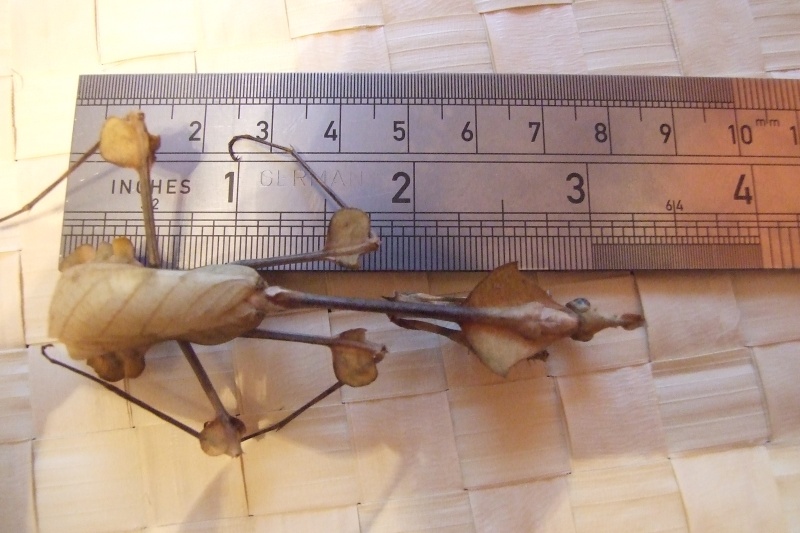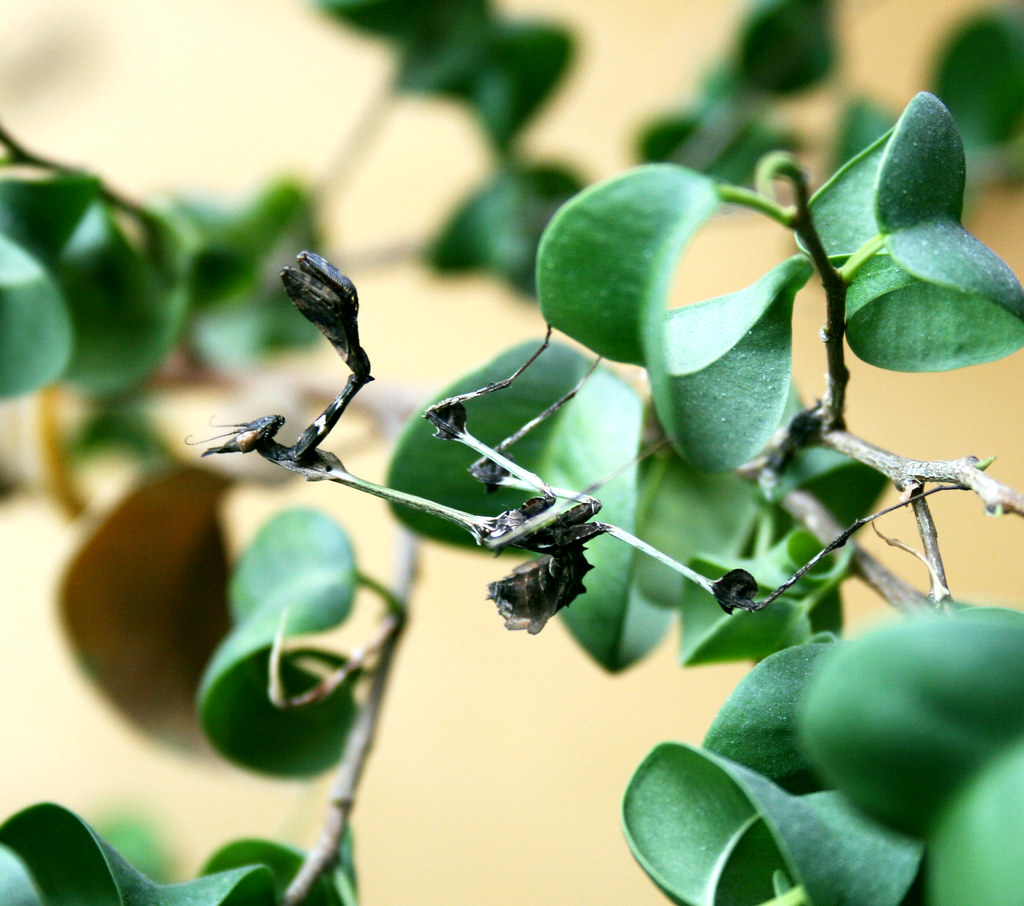You are using an out of date browser. It may not display this or other websites correctly.
You should upgrade or use an alternative browser.
You should upgrade or use an alternative browser.
Gongylus gongylodes
- Thread starter ThorEH
- Start date

Help Support Mantidforum:
This site may earn a commission from merchant affiliate
links, including eBay, Amazon, and others.
The_Asa
Well-known member
It has come to my attention that they can reach 10 cm. 
the female next to the ruler is really old, i will see if any of my current batch are any bigger tomorrow. if they are it will probably be marginal.Well, we have a lot of people who keep Gongy - maybe they could shed some light on this case.By the way - what is the number of moltings with this species?
as for moults, females moult 7 times, males moult 6 times.

$39.95 ($1.25 / Ounce)
Creation Cultivated 32oz Fruit Fly Culture - Live Feeder Insects for Praying Mantis, Jumping Spiders, Geckos, Lizards, Dart Frogs (Drosophila Hydei Flightless)
Creation Cultivated

$12.99 ($0.03 / Count)
Predator Foods Bulk Live Mealworms - 500 Count (Medium - 0.5")
Predator Foods

$14.99 ($0.47 / Ounce)
Fresh Fruit Fly Culture (Drosophila Hydei) - Praying Mantis Mantid Frog Lizard Food - 32oz Cup
Surmen Legacy

$64.95 ($1,039.20 / lb)
Creation Cultivated 32oz Fruit Fly Culture - Live Feeder Insects for Praying Mantis, Jumping Spiders, Geckos, Lizards, Dart Frogs (Wingless Melanogaster 2 Pack)
Creation Cultivated

$2.99
Praying Mantises pets. Praying Mantis Guide for Owners. Praying Mantis care.
Amazon.com Services LLC

$39.95 ($39.95 / Ounce)
Creation Cultivated 32oz Fruit Fly Culture - Live Feeder Insects for Praying Mantis, Jumping Spiders, Geckos, Lizards, Dart Frogs (Wingless Drosophila Melanogaster)
Creation Cultivated
ABbuggin
Well-known member
That means I will have some sub-sub adults in just a few days!the female next to the ruler is really old, i will see if any of my current batch are any bigger tomorrow. if they are it will probably be marginal.as for moults, females moult 7 times, males moult 6 times.
ABbuggin
Well-known member
It's always been to my knowledge that they reach 10 cm. I guess I'll find out soon enough.I was expecting them to be a bit bigger - 10 cm at least. Some claim their females were even up to 11 cm - well, I shall see how big mine will get.
ABbuggin
Well-known member
I have a dark chocolate brown one.Guys - do you know how can I get my Gongylus to be dark-brown?
I have various colour morphs all except green for some reason 
I've not kept them any differently, 1 cage has a very very dark brown female that grew up with a very very light sandy coloured female
I just hope I get a green morph from my 2nd generation
I've not kept them any differently, 1 cage has a very very dark brown female that grew up with a very very light sandy coloured female
I just hope I get a green morph from my 2nd generation
I have 30 L1 nymphs I will keep for myself to have mating pairs around March - I hope to get some nice morphs too.
Come to think of it, the guy I visited lately had all of his females dark brown, almost black by keeping them in a darker side of the room, with a brown net inside the cage...
The only thing is that I have those 30 hungry nymphs, and my fruit fly colonies are basically done, I have to resort to a more specific approach... hard to believe how strong those little nymphs are
Come to think of it, the guy I visited lately had all of his females dark brown, almost black by keeping them in a darker side of the room, with a brown net inside the cage...
The only thing is that I have those 30 hungry nymphs, and my fruit fly colonies are basically done, I have to resort to a more specific approach... hard to believe how strong those little nymphs are
Last edited by a moderator:
Hi
I have all colours again this generation. In some weeks my 7th generation will hatch. This time I had no problems with mating them, so luckyly I have 9 mated females now, and I look forward to mate the 7 females who are not yet mated, too. This shouldn't be a problem because alot of males are still alive and I have some subadult males, too.
I am really happy, I never had as much mated females in my last 6 generations
In the same enclosure I have light and dark beige, light, dark and red-brown, almost black, and light- and dark green
The most rare colour over here is the dark brown/ black colour. A lot of the females are green.
Best regards,
Gongylus breeding group
I have all colours again this generation. In some weeks my 7th generation will hatch. This time I had no problems with mating them, so luckyly I have 9 mated females now, and I look forward to mate the 7 females who are not yet mated, too. This shouldn't be a problem because alot of males are still alive and I have some subadult males, too.
I am really happy, I never had as much mated females in my last 6 generations
In the same enclosure I have light and dark beige, light, dark and red-brown, almost black, and light- and dark green
The most rare colour over here is the dark brown/ black colour. A lot of the females are green.
Best regards,
Gongylus breeding group
Well, then get a good camera and take soe pics for us 
I exchanged what little pairs I had for 30 nymphs to restart the colony for the next warm season - I will experiment with the brightness of light and the color of the setting in the enclosure, maybe I will get some new colors.
I had tremendous troubles in the previous attemt, and this time I started off bad - 30 L1 nymphs and no fruit flies since last Sunday... kinda spooky what a hungry L1 can do.
I exchanged what little pairs I had for 30 nymphs to restart the colony for the next warm season - I will experiment with the brightness of light and the color of the setting in the enclosure, maybe I will get some new colors.
I had tremendous troubles in the previous attemt, and this time I started off bad - 30 L1 nymphs and no fruit flies since last Sunday... kinda spooky what a hungry L1 can do.
Wow... extremely beautiful and interesting, Tier! Is there just the one with this coloration?
HiWow... extremely beautiful and interesting, Tier! Is there just the one with this coloration?
Yes, there is just this one and only. In some years breedings this species, I have seen thousands of Gongylus, but never one like this.
regards






























